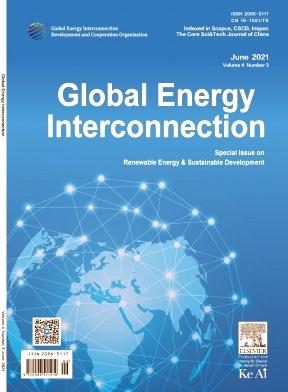考虑用户满意度和热惯性的用户级综合能源系统两阶段容量分配优化方法
IF 1.9
Q4 ENERGY & FUELS
引用次数: 0
摘要
综合能源系统是推进可再生能源利用和应对环境挑战的关键。国际能源系统的关键组成部分包括低碳、经济调度和需求响应,以最大限度地提高可再生能源消费和支持可持续能源系统。用户参与是需求响应的核心;然而,许多用户并不倾向于积极参与;因此,需求反应的全部潜力仍未实现。在需求-响应评估中必须优先考虑用户满意度。本文提出了一种考虑热惯性和用户满意度的用户级能源系统两阶段容量优化配置方法。该方法解决了IES内部的负载协调和互补问题,并寻求在引入系统热惯性和用户满意度模型的同时,最小化确定设备容量配置的年度总成本。调整室内供暖,以优化设备输出和负载概况,重点关注典型的,日常的,经济的和环境的目标。研究结果表明,在考虑用户满意度的情况下,系统热惯性优化了能源系统调度。这种优化减轻了环境问题,提高了清洁能源的整合。本文章由计算机程序翻译,如有差异,请以英文原文为准。
Two-Stage capacity allocation optimization method for user-level integrated energy systems considering user satisfaction and thermal inertia
Integrated-energy systems (IESs) are key to advancing renewable-energy utilization and addressing environmental challenges. Key components of IESs include low-carbon, economic dispatch and demand response, for maximizing renewable-energy consumption and supporting sustainable-energy systems. User participation is central to demand response; however, many users are not inclined to engage actively; therefore, the full potential of demand response remains unrealized. User satisfaction must be prioritized in demand-response assessments. This study proposed a two-stage, capacity-optimization configuration method for user-level energy systems considering thermal inertia and user satisfaction. This method addresses load coordination and complementary issues within the IES and seeks to minimize the annual, total cost for determining equipment capacity configurations while introducing models for system thermal inertia and user satisfaction. Indoor heating is adjusted, for optimizing device output and load profiles, with a focus on typical, daily, economic, and environmental objectives. The study findings indicate that the system thermal inertia optimizes energy-system scheduling considering user satisfaction. This optimization mitigates environmental concerns and enhances clean-energy integration.
求助全文
通过发布文献求助,成功后即可免费获取论文全文。
去求助
来源期刊

Global Energy Interconnection
Engineering-Automotive Engineering
CiteScore
5.70
自引率
0.00%
发文量
985
审稿时长
15 weeks
 求助内容:
求助内容: 应助结果提醒方式:
应助结果提醒方式:


